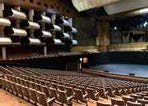- MENU
- MArch ARCHITECTURE (RIBA PART II)
- BA ARCHITECTURE (RIBA PART I)
- BA INTERIOR ARCHITECTURE
- BA DESIGNING CITIES
- BSc ARCHITECTURE TECHNOLOGY
- BSc ARCHITECTURE AND ENVIRONMENTAL DESIGN
- DIRECTORY
- OPEN 2022
- OPEN 2021
TUTORS
Nick Beech (module leader CC1)
Kate Jordan (module leader CC2)
Ben Stringer (module leader CC3)
IN ARCHITECTURAL PRACTICE, those who create the spaces we inhabit also need to be able to research, understand and communicate ideas about the way design relates to society. The Cultural Context programme is where all students studying on Westminster’s BA Architecture, BA Interior Architecture and BSc Architecture and Environmental Design courses learn how to do these tasks. The course is designed not only to develop deeper understandings of the histories of built environments, but also to reflect on how those histories are formulated and to ask whose histories they are. It is structured progressively over three years in three successive modules: CC1 A History of Architecture, CC2 Architectural History and Urbanism, and CC3: Dissertation.
Through a lecture programme, regular site visits, and seminars, students in CC1 are introduced to the history of architecture. Elementary spatial themes, ideas and broader contexts of architectural production from around 700BC to the present are presented in lectures. Through site visits – to buildings, archives, and museums – students practice ways of seeing, analysing, and recording historic architecture. Through regular set tasks and a final essay, students explore and test their understanding of a particular problem or idea in architectural history.
CC2 opens with a series of lectures that explore critical issues in contemporary architecture. Students work in groups to produce workbooks that review the lecture series and include independent research on the themes that they have been introduced to. In the second semester, the students are taught in small groups by individual tutors who lead seminars around their own research expertise. The students produce two pieces of coursework in this semester: an essay and a statement which describes the learning trajectory throughout the module.
In CC3, students research a subject of their choice for their dissertation with the support of seminars, presentations and weekly tutorials from a diverse group of academics. It is an important opportunity for students to begin shaping the particular direction of their future academic and professional careers. Among the many notable dissertations produced this year were: Zeina Alanzarouti’s study of post-conflict reconstruction in Damascus; Silvia Galofaro’s analysis of Battersea Power Station as a ‘body without organs’; Desire Lubwama’s research into the conservation of Brixton’s cultural heritage; Nada Maktari’s study of visitor experience at the Soane Museum; Isabelle Reid’s examination of public space in Kings Cross; Rowan St John’s piece on Lewisham’s Rural Urban Synthesis Society; and Alicia Montero’s study about resisting gentrification in Stokes Croft, Bristol.











